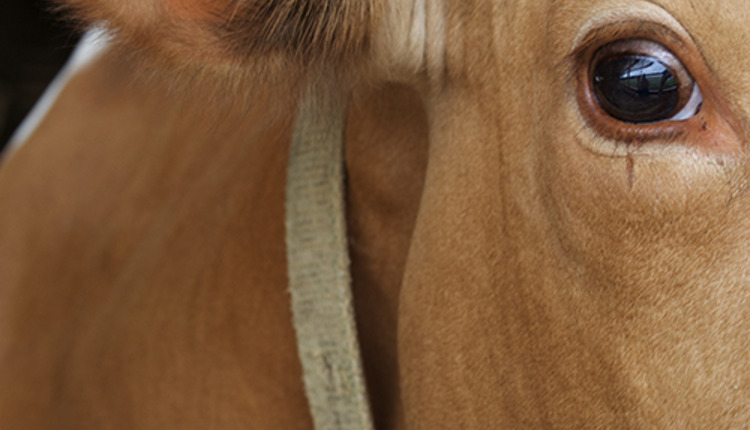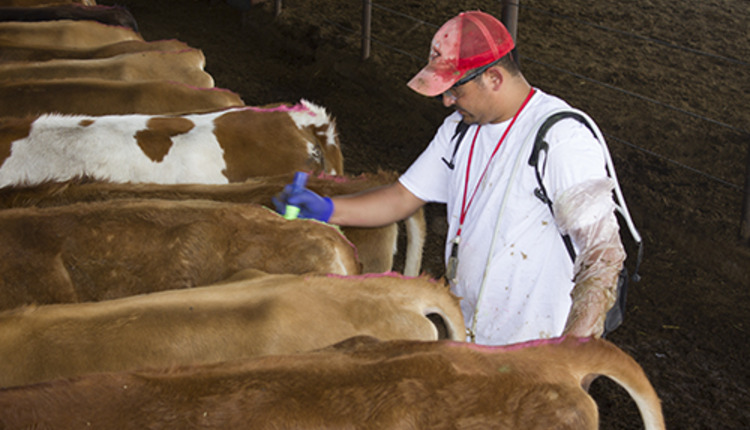
On each Friday before the official start of World Dairy Expo, the Alliant Energy Center instantly becomes home to one of the nation's largest dairy herds. Last year alone, over 2,600 heifers and cows came from all corners of the United States and Canada, and it's that massive co-mingling of cattle that has animal health officials taking action.
Bob Kaiser, dairy cattle superintendent, stated, "It is my responsibility to ensure the biosecurity and safety of all dairy cattle and exhibitors at World Dairy Expo to the fullest extent possible. I believe our new health paper check-in process will help us do a better job of accounting for all animals that come onto the World Dairy Expo grounds."After many discussions with a variety of individuals, World Dairy Expo officials have chosen to make a few changes to the current check-in process. These important changes have been made to ensure the health and biosecurity of not only the exhibitors and their animals, but of the entire dairy industry, as well.
What you need to know As in the past, all trailers must enter through the Rimrock Road gate and stop at the Arena Building to receive their stalling locations. According to Mark Clarke, general manager, while here you must present the health and registration papers for all animals on your trailer.
A check-in team, consisting of Wisconsin Department of Agriculture Trade and Consumer Protection (DATCP) veterinarians and World Dairy Expo approved staff, will then escort you as close as possible to your stalling location. As cattle are unloaded, they will immediately be checked against their health papers. The requirements for animal health and identification have not changed, just the time line in which events will occur. Kaiser also noted, "Cattle will be visually inspected as they come off trailers and then checked against their respective health papers. Assuming exhibitors/truckers come prepared with appropriate health and registration papers, I anticipate processing cattle in a timely manner."
If an animal does not have the appropriate paperwork, it will be sent to a quarantine area until paperwork arrives.The other animals on the trailer, with proper documentation, will be able to go to the exhibitor's stalling location.
In addition, animals that enter the grounds for purposes other than the show must have health papers accompany them even if the Expo grounds are being used solely as an off-loading site and the animal is continuing on to another location or sale.
"There could be advantages to this check-in process for Canadian exhibitors because of the official radio frequency identification technology (RFID) mandated by their government," Clarke stated. He also sees this as an opportunity to learn about RFID technology and how it could be applied to enhance the check-in process at World Dairy Expo down the road.
Once to set up an appointment," notes Clarke. This will help ensure that the Expo staff has the appropriate personnel at the gate upon arrival and will allow for cattle to be unloaded more quickly.
Betterment of an industry These check-in changes have been made in order to improve the safety and biosecurity for exhibitors and the entire dairy industry. Both Clarke and Laura Herschleb, cattle show manager, strive for these changes to be exhibitor friendly. With the health check-in changes, the goal is to reduce exhibitor concern about potential health issues when they return home after exposure to a large number of animals from across North America.
The World Dairy Expo staff anticipates that this will be a step toward improving the biosecurity of Expo and the overall industry.For more information on the health and import requirements for attending World Dairy Expo, the Wisconsin Department of Agriculture, Trade, and Consumer Protection has a website, detailing the information you need to present in order to bring cattle onto the Expo grounds.








